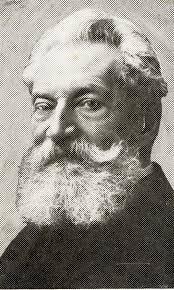An 1870s painter from Queens captures the stark reality of “the way the city is built”
Charles Henry Miller didn’t intend to devote his life to painting. Born in 1842 in Gotham, he studied art but graduated from New York Homeopathic Medical College and found work as a ship’s surgeon.

Two failed mutinies during his first voyage on a Liverpool-bound ship made him reconsider his professional direction. While in England he visited European art museums, prompting him to abandon medicine for a career as an artist.
Miller became known for his lush, dreamy pastoral landscapes of a then-rural Queens, where he lived much of his adult life—earning the title “the artistic developer of the little continent of Long Island” from American poet and travel writer Bayard Taylor.
But in 1877 he apparently took a trip across the East River to the district of Harlem, which was beginning its transformation from rural country to urban city. Miller (below right) captured in stark detail a scene hardly uncommon in the burgeoning New York of the era: workers getting ready to tear down a cottage on top of a hill, ostensibly to construct multi-family tenements.

“Charles Miller had a preservationist’s interest in the historic buildings and landmarks that were rapidly disappearing throughout New York and Long Island,” states the Brooklyn Museum, which has this painting, plainly titled “The Way the City Is Built,” in its collection.
“This Harlem scene represents the modern urban landscape in transition: a hill on which stands an old cottage is being razed for the construction of more multistory tenements like the ones at right.”
New York has always been a “pull down and build over again” town, as Walt Whitman put it when describing the 1840s. But there’s more to Miller’s painting than the disappearance of spacious countryside in favor of tightly packed cityscape.
The painting highlights the contrast between the two worlds that co-existed in the late 19th century: the men in the ravine with their primitive tools and horse carts working together as beasts of burden—and then modern civilization towering before them. The future of New York belonged to the tenement builders.
[Top image: Brooklyn Museum; second image: New York Medical College]



